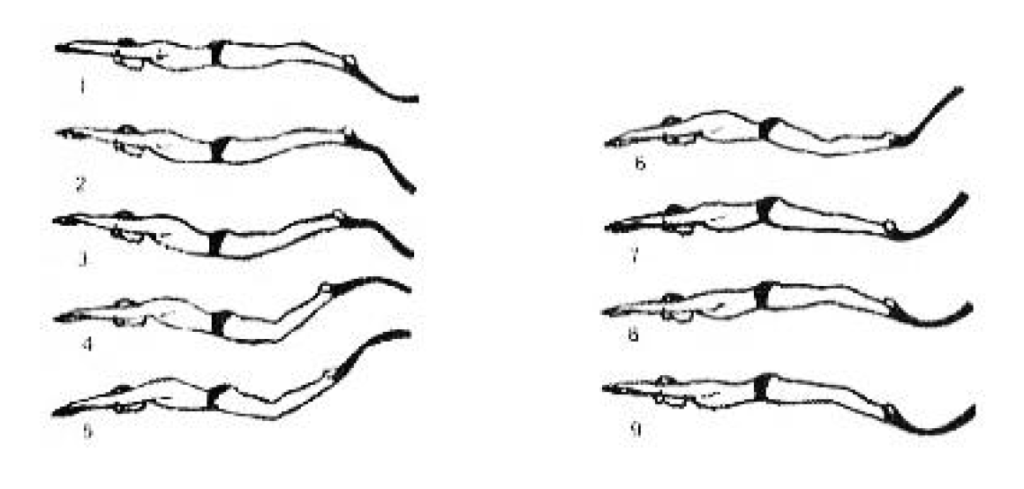Technique and Style : definitions
Technique, from the Greek ‘tekhne’ is defined as an art, skill, method, set of principles by which ‘something’ is achieved or created (Oxford Dictionaries). Teaching swimming technique (monofin technique) means imparting specific motor skills to achieve an objective, for us: moving efficiently underwater, hold breathing, with a monofin. Based on scientific knowledge, and taking into account environmental, material and regulatory constraints, the Technique proposes a theorisation of the most efficient movement.
Style is a personal interpretation of the technique, and the athlete uses his or her own resources to apply the swimming technique. ‘The result of teaching technique is a swimming style’. Basil Grammaticos.
The technique for swimming with a monofin will vary according to the discipline (DYN, CTW, SPEED APNEA) and must take into account the following parameters:
- Discipline regulation :
CTW and DYN are regulated, but to my knowledge there are no specific limitations on the use of a monofin to perform in these disciplines. Nevertheless, it should be noted that the DYN and CTW in bifins and with a monofin records have been differentiated, which means that two swimming techniques that used to coexist can now be isolated. Through its decisions, the sporting institution influences swimming technique. - The Equipment :
All monofins currently in use take account of CMAS regulations on monofins dimensions. As I described a little in my basic knowledge of the monofin and footpockets, technical innovations influence swimming technique and can lead the sporting institution to legislate to control the development or safety of the discipline. In the 2000s, with the advent of the Andronov footpocket, the CMAS regulated the dimensions of the monofin, which now had to fit into a wooden box that defined its length, width and height (max 760x760x150 in mm). By default, freedivers use monofins from finswimming. - The laws of hydrodynamics and their biomechanical consequences :
The laws of hydrodynamics help us to understand the environment in which swimmers move. But ‘it is above all the biomechanical consequences (of the swimmer’s behaviour) that will have the greatest influence on swimming technique. The swimmer’s activity, in relation to biomechanics, must therefore take fluid mechanics into account to a large extent’ Didier CHOLLET. - The athlete :
Whether we refer to general data on the human body or to personal characteristics, information such as :age, sex, height, weight, muscular quality, fat mass, length of segments, neuromotor qualities of the individual, energy profile, motivations etc… All must be taken into account. All this information can influence technical adaptations.
How to theorise a swimming technique?
The swimming technique can be theorised by creating drawings detailing the stroke in chronological order, like a kinogram. This method will give the reader a mental representation of the stroke, but it is too rigid and doesn’t really offer the possibility of evolving over time.

To try and give you my ‘version’ of swimming technique, I’m going to follow the method of one of my teachers at the University of Sciences and Techniques of Physical and Sports Activities (S.T.A.P.S) in Montpellier, Didier Chollet, who suggests presenting swimming technique in the form of technical principles to be respected.
Swimming technique and its principles are acquired through hard work. You therefore need to understand them and practise them to be able to express yourself in an effective style. You will then have the knowledge to understand the effects of certain actions and/or interactions and you will be able to act on them in a coherent manner.
The solution lies in practice! So go and swim!
References:
– La Technique de Nage en Monopalme, 1991 Basile Grammaticos
– Approche Scientifique de la Natation Sportive, 1992 Didier Chollet
– Technologies et Techniques des Sports : le regard de l’histoire et des sciences humaines et sociales, 2017 Luc Robène